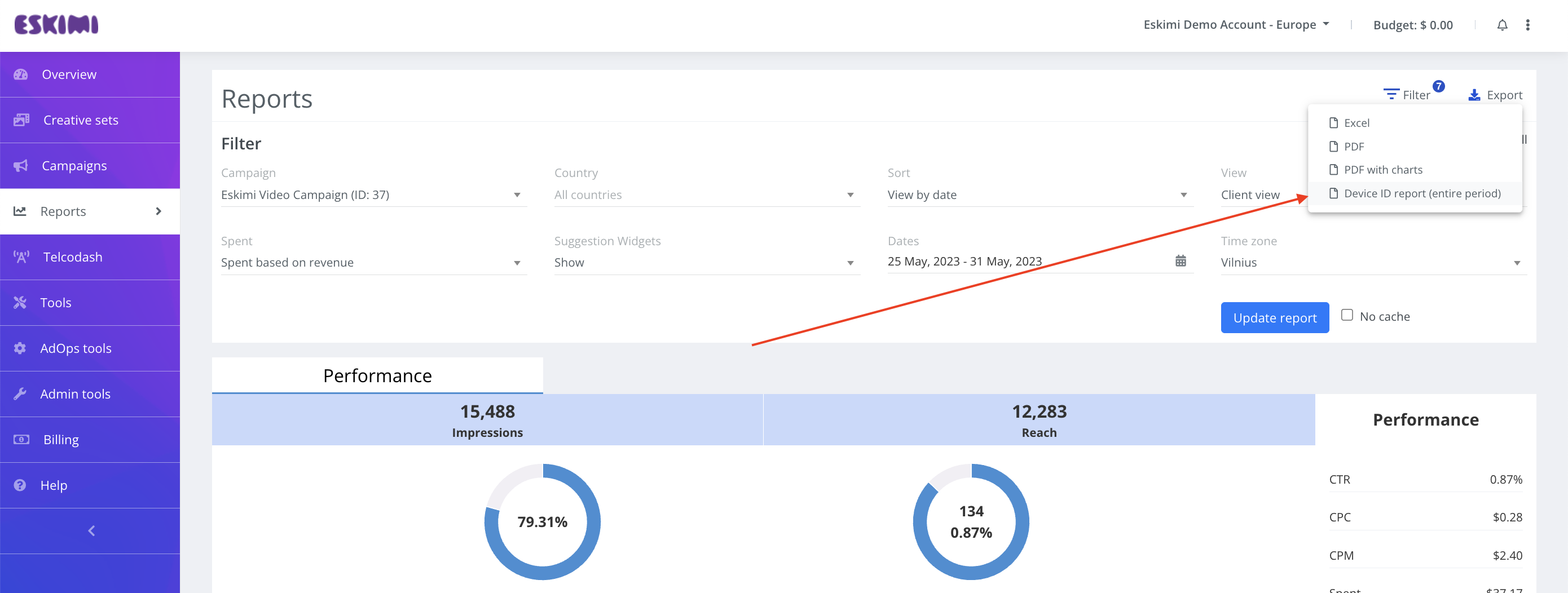Maximising users who engaged with your advertising
Introduction
Retargeting plays a pivotal role in the success of full-funnel advertising. Eskimi offers a range of audience collection solutions, such as pixels and events, directly within its DSP (Demand-Side Platform). Moreover, Eskimi empowers advertisers to go a step further by retargeting users who have engaged with their programmatic advertising on third-party platforms like DSPs and social media channels. This article provides a comprehensive overview of the workflows, use cases, logic, and limitations involved in using these tools.
Data Collection
By default, every programmatic campaign executed through Eskimi collects data on users who have clicked on your advertising. Additionally, the system has the capability to collect data on:
- Users who have seen your ads (impression audience).
- Users who have engaged with your ads through Rich Media events (events audience).
- Users who have converted through your ads (conversions audience).
The audience collection tool is readily available on the campaign approval page for self-service clients. However, for managed campaigns, advertisers are advised to contact their dedicated adops manager to enable additional audience collection tools.
Remember: To maximise your audience collection, it is important to ensure that audience collection is enabled with the start of your programmatic campaign.
Workflows
Advertisers or dedicated adops managers can easily access all the aforementioned audience data directly from the user interface (UI). Once a programmatic campaign is launched, any engaged users can be found by following these steps: Reports > Export > Device ID report (entire period).
It's important to note that the audience data will remain available for 180 days after the campaign concludes. After this period, the device ID report will no longer be accessible in the system. It is therefore crucial to make the most of this timeframe for audience collection and analysis.
Additionally, users can be exported for the whole campaign period only. It is not possible to export audiences for a specific campaign period.
Logic
Clicks, impressions, events, and conversions audience users are derived from the Eskimi Data Management Platform (DMP). The DMP combines data from Eskimi's third-party cookies (website users) and mobile advertising IDs (app users). Consequently, when exporting users through the Device ID report, it will include a mixture of both cookie-based and device ID-based users.
To maximise the potential of your audience and optimise your retargeting campaigns, it is crucial to export users from programmatic campaigns that specifically targeted mobile apps or campaigns where a significant portion of the reached users originated from apps. This approach ensures that you leverage the most relevant and effective audience segments for your retargeting efforts.
App users hold significant importance in retargeting efforts due to the stability of mobile advertising IDs. These unique identifiers remain consistent even when users switch between different applications. On the other hand, cookie-based audience data is limited to retargeting exclusively within the Eskimi DSP.
Use cases
Until now you should be acquainted how to collect and export users that engaged with your programmatic advertising. In addition to that we need to talk about how the audiences can be used:
1. CRM: Clients can add the users to their CRM if they collect mobile advertising ID users from other DSPs or apps.
2. Retargeting on 3rd party DSPs: Users collected through advertising on Eskimi can be uploaded to a 3rd party DSP (DV360, TTD etc.) which supports mobile advertising ID upload.
2. Retargeting on Social Media channels: Users collected through advertising on Eskimi can be uploaded to a social media channels that support mobile advertising ID upload. A common platform by clients is Facebook.
Summary
Eskimi provides advertisers with powerful tools for retargeting, enabling them to leverage audience data and reach users who have engaged with their programmatic advertising across multiple platforms. By prioritizing app users and their mobile advertising IDs, advertisers can achieve more targeted and impactful retargeting campaigns, leading to improved conversion rates and overall marketing success.


